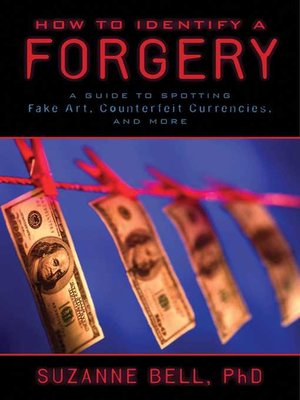How to Identify a Forgery
ebook ∣ A Guide to Spotting Fake Art, Counterfeit Currencies, and More
By Suzanne Bell

Sign up to save your library
With an OverDrive account, you can save your favorite libraries for at-a-glance information about availability. Find out more about OverDrive accounts.
Find this title in Libby, the library reading app by OverDrive.



Search for a digital library with this title
Title found at these libraries:
| Loading... |
Fakes and counterfeits have existed since ancient times; and while the methods of forgery have surely advanced, so has the science necessary to identify them. Currency, art, and historical artifacts are only a few of the objects commonly forged; and scientists in forensic laboratories throughout the world work alongside artists, museums, linguists, and historians to authenticate these items. How to Identify a Forgery investigates how modern computers, printers, and scanners have presented new challenges for scientists and how objects suspected of being faked, forged, or fraudulent are examined forensically.
How to Identify a Forgery contains information on:
Counterfeiting currency
Electronic and digital signatures
Dating ink
Dyes and pigments
Forging art
Handwriting analysis
Scientific methodology
Visual examination and microscopy
How to Identify a Forgery contains illustrations, a glossary, and a detailed list of print and web resources. Sidebars on notable cases and pressing forensics issues throughout reinforce the text. Essential for students, teachers, collectors, and investigators who require information on proper forensic science practices, Dr. Bell's book is as fascinating as it is useful.
How to Identify a Forgery contains information on:
How to Identify a Forgery contains illustrations, a glossary, and a detailed list of print and web resources. Sidebars on notable cases and pressing forensics issues throughout reinforce the text. Essential for students, teachers, collectors, and investigators who require information on proper forensic science practices, Dr. Bell's book is as fascinating as it is useful.






